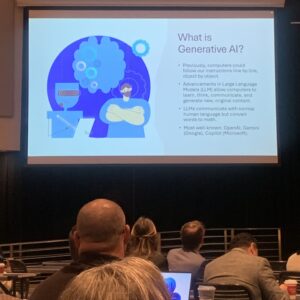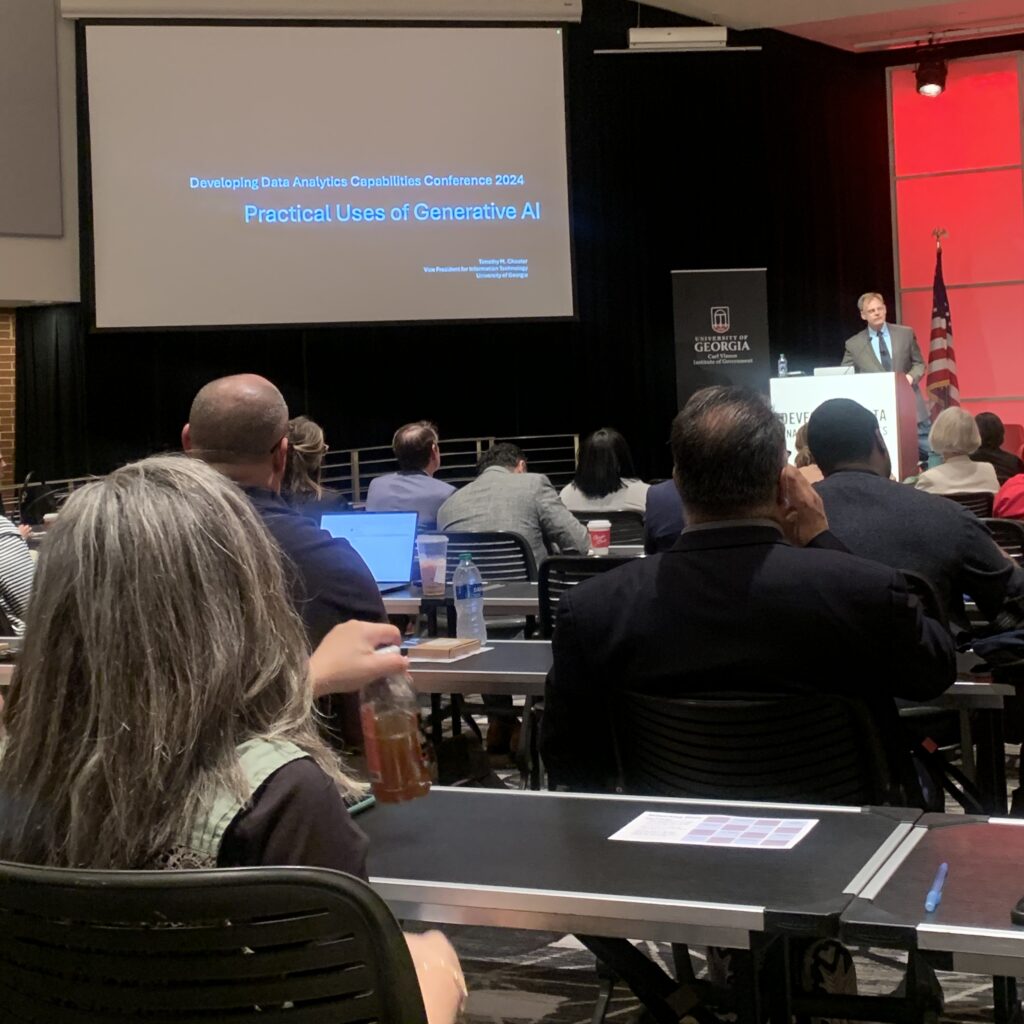21 May 2024
Future Use of GIS and AI for Economic & Community Development


How can generative AI and advanced analytics impact decision-making processes in government and academic settings? The University of Georgia (UGA) recently hosted the Developing Data Analytics Capabilities Conference. This conference, brought together professionals who work with data or want to learn more about data critical for helping state and local leaders make wise and strategic decisions.
The keynote sessions, plenary speakers insights and panel discussions from the conference brought to light some questions about AI’s impact in the future, especially concerning GIS, the creation of 3D models and conceptual site designs, and how they can support economic and community development.

Leveraging AI and GIS for Informed Decision-Making in Economic Development.
Artificial Intelligence (AI), a branch of computer science, aims to create systems capable of performing tasks that usually require human intelligence. Tasks such as learning from experience, understanding natural language, recognizing patterns, solving problems, and making decisions. AI can be seen as a set of algorithms and models that enable machines to mimic human-like behavior and thought processes.

On the other hand, Geographic Information Systems (GIS) is a framework for gathering, managing, and analyzing data rooted in the science of geography. GIS integrates many data types and allows us to visualize, question, analyze, and interpret data to understand relationships, patterns, and trends. It’s essentially a tool that captures, stores, checks, integrates, manipulates, analyzes, and displays data related to positions on the Earth’s surface.
AI can automate and enhance analytical tasks, while GIS provides spatial context and visual exploration capabilities. When combined, they offer a powerful toolset for spatial analysis and decision-making.
Applications
GIS and AI offers insights into locations, including demographic data, traffic patterns, and competitor proximity, aiding businesses in pinpointing optimal operation sites. Utilizing 3D models and AI, enhances project planning by visualizing sites and understanding spatial limitations, providing valuable workforce insights for training investments and business placements. In community development, 3D models facilitate planning, visualizing proposed developments and their impacts, promoting inclusive decision-making, improved public services, and community cohesion.

What we know…
AI technology isn’t new; the first documented AI computer was in 1951, and terms like ‘machine learning’ have long encompassed basic AI concepts. The recent popularity of generative AI may make it seem novel and intimidating, often fueled by media portrayals.
However, like the internet’s early days, AI is expected to become an essential tool in our daily lives, offering significant benefits while also presenting some challenges.
[1] Mike Thomas, The Future of AI: How Artificial Intelligence Will Change the World, March 13, 2024, https://builtin.com/artificial-intelligence/artificial-intelligence-future.
[2] Columbia University, Artificial Intelligence (AI) vs. Machine Learning, https://ai.engineering.columbia.edu/ai-vs-machine-learning/
What to keep in mind about AI
📌 Question and Verify: Many people use generative AI for writing documents, letters, blogs, and more, which is helpful for tedious tasks. However, relying on AI for facts and critical information can be risky since AI can produce false data if fed incorrect sources. Always fact-check and verify information from AI, even when it provides sources, as they may not always be reliable.
📌 Regulation is Coming: AI is in its early stages, with few regulations, offering freedom for innovation and risks for misuse. Governments are starting to address AI’s impact and necessary policies. For now, be mindful of potential future regulations, especially concerning copyright infringement. Using generative AI to create content can invite scrutiny, so treat AI like any other data source and give proper credit.
📌 Prepare for Change: A common fear is AI’s impact on jobs, but it’s more likely to evolve professions rather than replace them. AI is a tool, and those who adapt and incorporate it will thrive, while others may struggle. This change won’t be instant and will vary across professions. Now is the ideal time to explore AI’s applications and potential. Start by researching and testing AI to understand its use and comfort level. Preparing for change means being ready, not necessarily changing immediately.
Impacts on the Future
Using AI and GIS as tools in 3D modeling, conceptual site designs, and data visualization can drive economic and community development by supporting more effective planning and decision-making.
By providing a deeper understanding of spatial data, these technologies can help industries, retailers, and communities make strategic decisions that advance economic and community growth. This can lead to job creation, increased investment, and improved living standards. As these technologies evolve, they will unlock even more opportunities.

